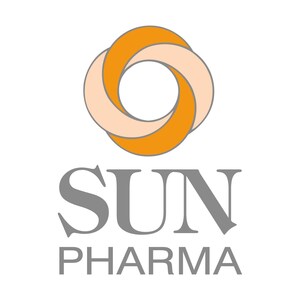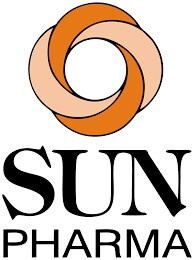WINLEVI poster presentations at 2024 Fall Clinical Dermatology Conference also include data affirming reduced acne severity and tolerability in patients with skin of color.
MUMBAI, India and PRINCETON, N.J., Oct. 25, 2024 /PRNewswire/ -- Sun Pharmaceutical Industries Limited (Reuters: SUN.BO, Bloomberg: SUNP IN, NSE: SUNPHARMA, BSE: 524715, "Sun Pharma" and includes its subsidiaries or associate companies), today presented data strengthening the clinical rationale for the use of WINLEVI® (clascoterone) cream 1% to treat acne. In poster presentations at the 44th Annual Fall Clinical Dermatology Conference, data show WINLEVI significantly reduces sebum (oil) production and demonstrates excellent stability in the presence of other commonly prescribed topical acne treatments, supporting the use of WINLEVI in combination with those medications. Data also showed patients with skin of color, an under-represented population in studies of acne medications, experienced reduced acne severity and tolerability while taking WINLEVI. Collectively, the data continue to show that WINLEVI improves acne severity and is well tolerated.
"As we learn more about the importance of sebum as a main cause of acne, it is gratifying to see new data supporting the use of WINLEVI to reduce sebum production as well as its suitability for combination treatment with other commonly prescribed topical agents," said Abhay Gandhi, chief executive officer, North America at Sun Pharma. "We are also encouraged by the reported reductions in acne severity and tolerability in people with skin of color, for whom the impact of acne can be profound. Together, these latest studies further establish WINLEVI as a safe and effective acne medication that dermatology professionals can confidently prescribe to their patients."
WINLEVI is the first and only androgen receptor inhibitor indicated for the topical treatment of acne vulgaris (acne) in patients 12 years of age and older, and the first and only FDA-approved topical treatment available in the U.S. that targets sebum production in the skin. Sebum is an oily wax that protects and moisturizes skin, but too much of it feeds bacteria inside the skin, causing inflammation and acne lesions. Acne is the most prevalent skin condition in the U.S., affecting up to 50 million Americans and 80% of people at some point during their lives.1,2 It is the most common dermatological disorder in Black/African American and Hispanic/Latino populations.3
WINLEVI cream is a topical prescription medicine to treat acne in people 12 and older. The most common side effects include reddening, scaling or dryness, and itching. Local irritation may occur.
Sebum reduction data
Researchers presented 12-week interim results from a yearlong study of the effect of WINLEVI on facial sebum production in patients with acne. The study's primary objective and efficacy endpoint was reduction in casual facial sebum levels, as measured by a sebumeter, a device that directly measures the amount of lipids on the skin's surface. The study was also designed to assess the ability of WINLEVI to reduce the Investigator's Global Assessment (IGA) score, a scale designed for investigators to assess the level of facial acne (0 = clear, 1 = almost clear, 2 = mild, 3 = moderate, 4 = severe). Other study objectives and efficacy endpoints included inflammatory and noninflammatory acne lesion counts, and investigator-assessed oily appearance, pore size, and facial shine; the latter three endpoints were assessed on a five-point scale (0 = none, 1 = minimal, 2 = mild, 3 = moderate, 4 = severe).
Among the 40 participating patients, the mean age was 20.9 years; most patients were female (60%) and White (63%). All patients entered the study with mild (57.5%) or moderate (42.5%) acne, as well as a mean sebumeter reading of 115.9 ± 50.5.
The researchers reported significant reductions in sebumeter measurements following use of WINLEVI at six (-22%, P = 0.002), 10 (-19%, P = 0.005), and 12 weeks (-27%, P <0.001). They also observed significant improvements in facial oily appearance after four weeks of WINLEVI treatment (-8%, P = 0.008), with continued improvement through 12 weeks (-40%, P <0.001). Similarly, patients' pore size improved significantly after six weeks (-13%, P = 0.002), and continued to improve through 12 weeks (-23%, P <0.001). Additionally, facial shine levels significantly improved after four weeks (-9%, P = 0.004) with continued improvement through 12 weeks (-39%, P <0.001).
By Week 12, patients using WINLEVI experienced a statistically significant 29% reduction in IGA score (P <0.001). Use of WINLEVI also resulted in significant reductions in the numbers of inflammatory and noninflammatory lesions (-48% and -40%, respectively; P <0.001 for both measurements) after four weeks, with continued improvement through 12 weeks (-54% and -34%, respectively; P <0.001 for both). WINLEVI was well tolerated through Week 12, with no reports of adverse reactions.
"This is exciting news for people living with acne because this is the first study to demonstrate a reduction in measured facial sebum production following the use of clascoterone cream 1%," said lead investigator Zoe D. Draelos, MD, of Dermatology Consulting Services, PLLC, in High Point, N.C. "In addition to confirming the sebum-reducing effect of WINLEVI, our findings support data from previous clinical trials which showed reductions in the number of inflammatory and noninflammatory lesions, further demonstrating the clinical utility of this topical acne medication."
Stability in combination therapy data
Dr. Draelos and colleagues also reported results from a study assessing the stability of WINLEVI when layered with other topical acne medications such as tretinoin cream 0.025%, adapalene gel 0.3%, dapsone gel 7.5%, azelaic acid 15%, benzoyl peroxide 5%/clindamycin 1%, benzoyl peroxide 2.5%/adapalene 0.1%, and benzoyl peroxide encapsulated 5%. Each of these medications were placed separately on individual microscope slides with WINLEVI and incubated for eight hours at 37° Celsius. Material from the slides was extracted for analysis via high-performance liquid chromatography-mass spectrometry (HPLC-MS).
WINLEVI concentrations remained stable after layering with other acne medications. The percentage of WINLEVI recovered after layering ranged from 98% to 119%, indicating that none of the acne medications evaluated induced degradation of WINLEVI when used in combination.
"Multimodal topical therapy, incorporating products with multiple mechanisms of action to target multiple mechanisms of disease, has become standard practice in the treatment of acne," commented Dr. Draelos. "In this in vitro study, WINLEVI demonstrated consistent and reproducible stability in the presence of other acne medications. Our findings support the combination of WINLEVI with topical retinoids, topical antibiotics, and/or benzoyl peroxide as a viable acne treatment strategy and complement the encouraging results observed in the sebum reduction and skin of color trials."
Skin of Color Data
A separate team of researchers presented 16-week interim results from a 56-week, single-center, open-label pilot study evaluating the efficacy and safety of WINLEVI in 10 patients (mean age 24 years) with skin of color (Fitzpatrick skin types IV, V, and VI) and moderate-to-severe facial acne. The study met its primary endpoint, with seven (78%) patients achieving an IGA score of 0 (clear) or 1 (almost clear) at Week 16 (P = 0.008 vs. baseline). The study also met its secondary endpoints at Week 16, including significant reductions in inflammatory (91.8%, P = 0.008), noninflammatory (90.9%, P = 0.009), and total lesions (90.9%, P = 0.009). Investigator- and participant-assessed tolerability parameters were absent or minimal at most time points through Week 16. There were no reports of adverse events during the 16-week interim analysis period.
For complete prescribing information please click here.
INDICATION
WINLEVI (clascoterone) cream 1% is an androgen receptor inhibitor indicated for the topical treatment of acne vulgaris in patients 12 years of age and older.
IMPORTANT SAFETY INFORMATION
CONTRAINDICATIONS:
None.
WARNINGS AND PRECAUTIONS
Local Irritation: Pruritus, burning, skin redness or peeling may be experienced with WINLEVI cream. If these effects occur, discontinue or reduce the frequency of application of WINLEVI cream.
Hypothalamic-pituitary-adrenal (HPA) axis suppression may occur during or after treatment with WINLEVI. In the pharmacokinetics (PK) trial, HPA axis suppression was observed in 1/20 (5%) of adult subjects and 2/22 (9%) of adolescent subjects at Day 14. All subjects returned to normal HPA axis function at follow-up 4 weeks after stopping treatment. Conditions which augment systemic absorption include use over large surface areas, prolonged use, and the use of occlusive dressings. Attempt to withdraw use if HPA axis suppression develops.
Pediatric patients may be more susceptible to systemic toxicity.
Hyperkalemia: Elevated potassium levels were observed in some subjects during the clinical trials. Shifts from normal to elevated potassium levels were observed in 5% of WINLEVI-treated subjects and 4% of vehicle-treated subjects.
ADVERSE REACTIONS
Most common adverse reactions occurring in 7 to 12% of patients are erythema/reddening, pruritus and scaling/dryness. Additionally, edema, stinging, and burning occurred in >3% of patients and were reported in a similar percentage of subjects treated with vehicle.
About Sun Pharmaceutical Industries Limited. (CIN - L24230GJ1993PLC019050)
Sun Pharma is the world's leading specialty generics company with a presence in specialty, generics and consumer healthcare products. It is the largest pharmaceutical company in India and is a leading generic company in the U.S. as well as global emerging markets. Sun Pharma's high-growth global specialty portfolio spans innovative products in dermatology, ophthalmology, and onco-dermatology and accounts for over 18% of company sales. The company's vertically integrated operations deliver high-quality medicines, trusted by physicians and consumers in over 100 countries. Its manufacturing facilities are spread across six continents. Sun Pharma is proud of its multicultural workforce drawn from over 50 nations. For further information, please visit www.sunpharma.com and follow us on LinkedIn & X (Formerly Twitter).
Disclaimer: Statements in this "document" describing Sun Pharma's objectives, projections, estimates, expectations, plans or predictions, industry conditions, or events may be "forward-looking statements" within the meaning of applicable securities laws and regulations. Actual results, performance, or achievements could differ materially from those expressed or implied. Sun Pharma does not undertake any obligation to update or revise forward-looking statements to reflect developments or circumstances that arise or to reflect the occurrence of unanticipated developments/circumstances after the date hereof.
References
1 Skin conditions by the numbers. American Academy of Dermatology Association, 2021. Available at Skin conditions by the numbers (aad.org). Accessed January 11, 2023.
2 Collier CN, Harper JC, Cafardi JA, et al. The prevalence of acne in adults 20 years and older. J Am Acad Dermatol. 2008;58(1):56-59.
3 Taylor SC. Epidemiology of skin diseases in people of color. Cutis. 2003;71(4):271-275.
SOURCE Sun Pharma

WANT YOUR COMPANY'S NEWS FEATURED ON PRNEWSWIRE.COM?
Newsrooms &
Influencers
Digital Media
Outlets
Journalists
Opted In






Share this article